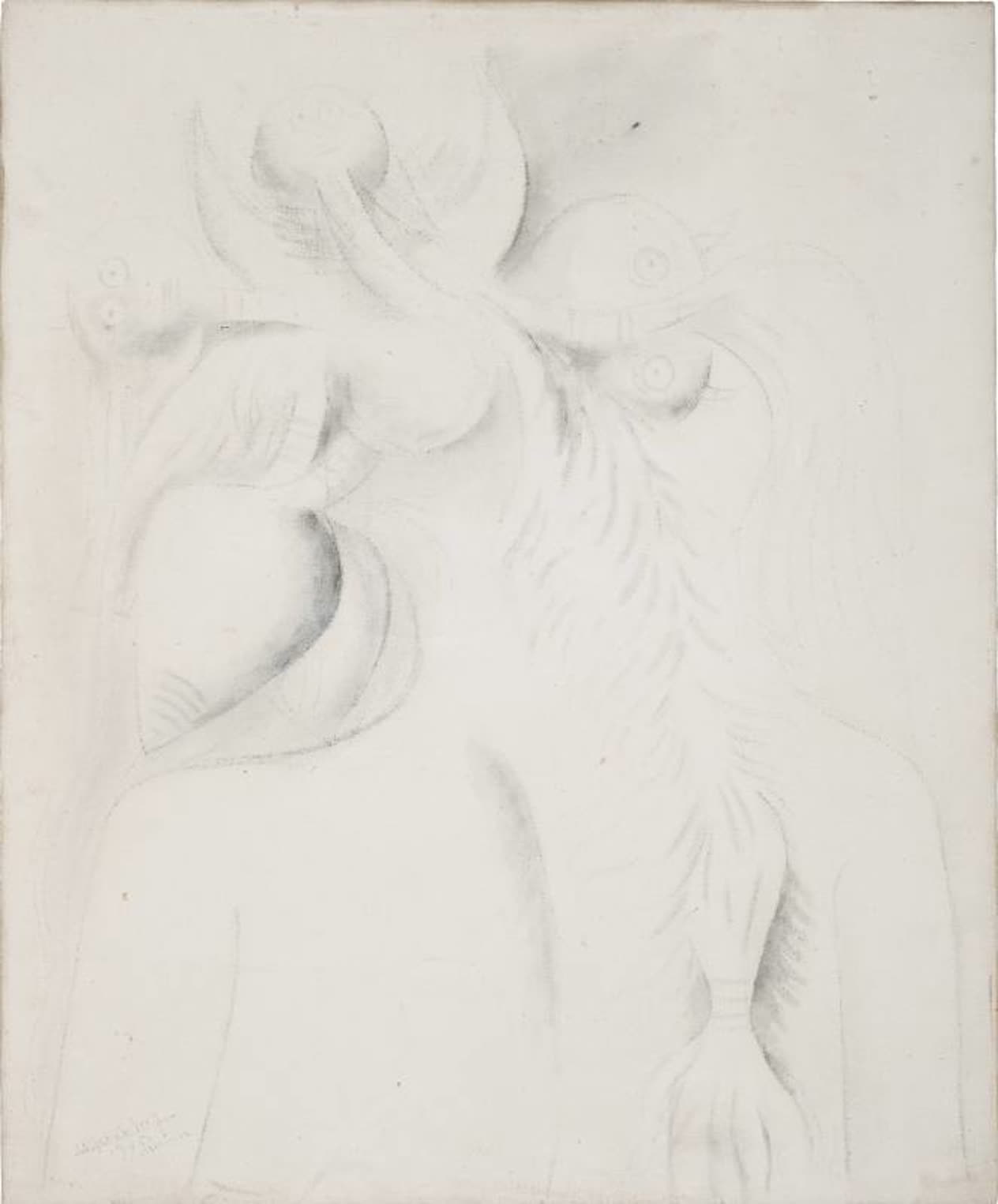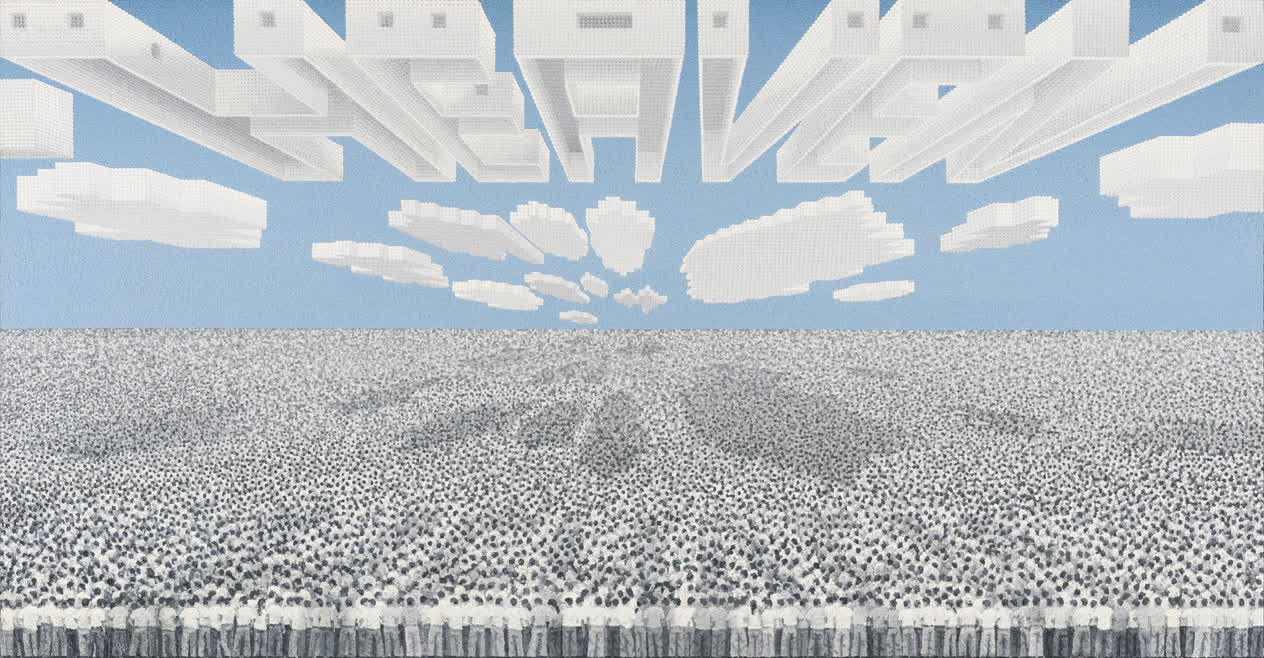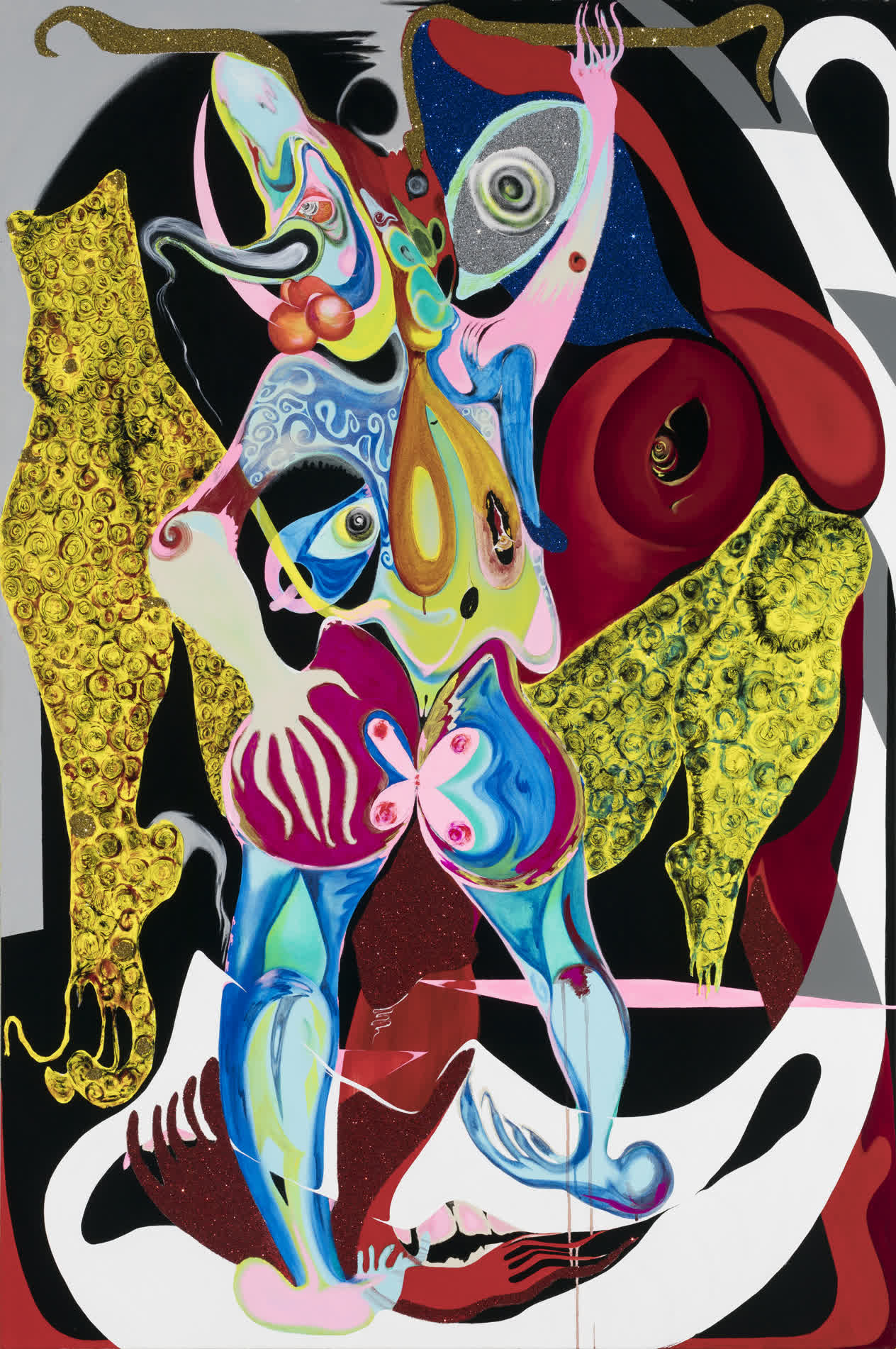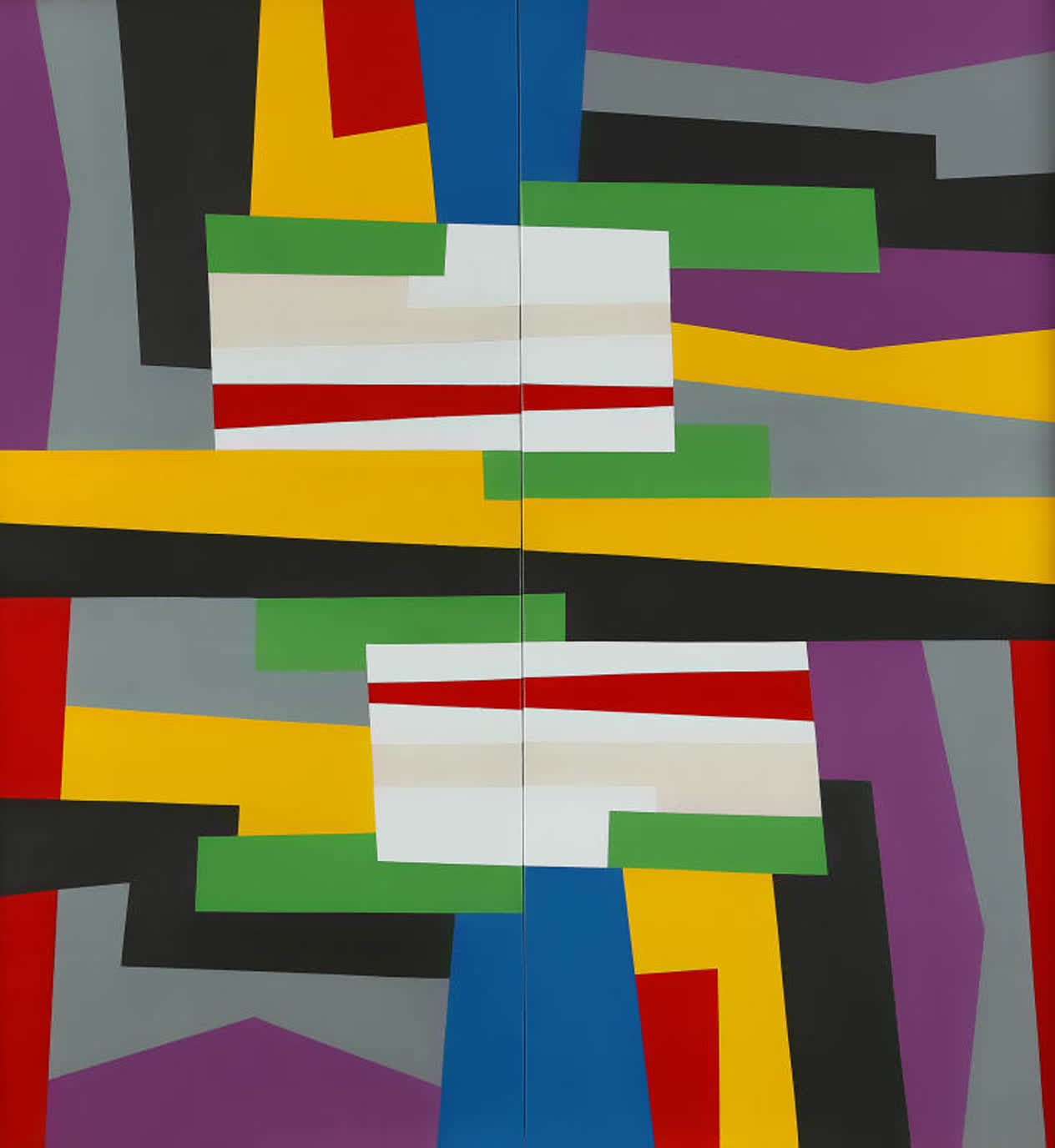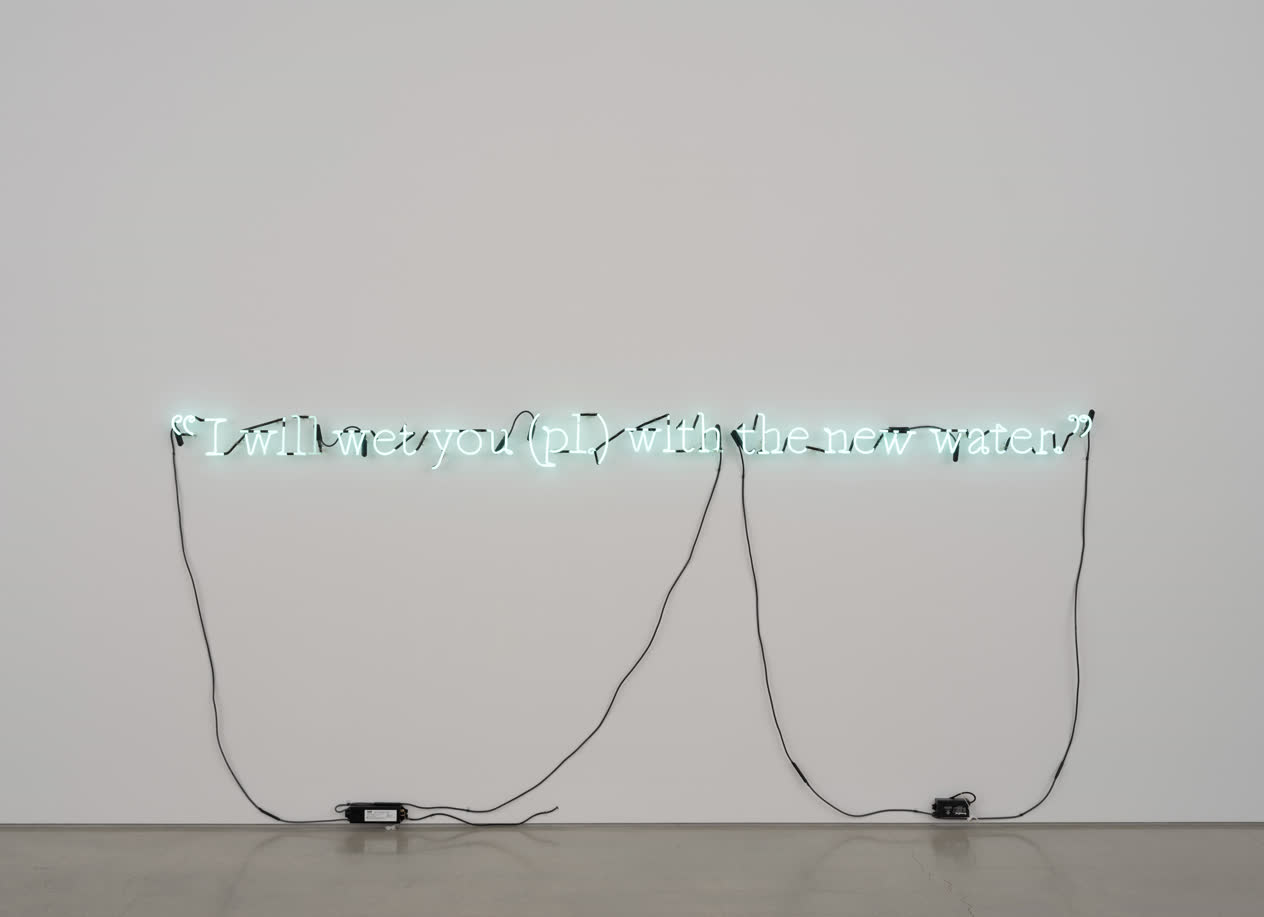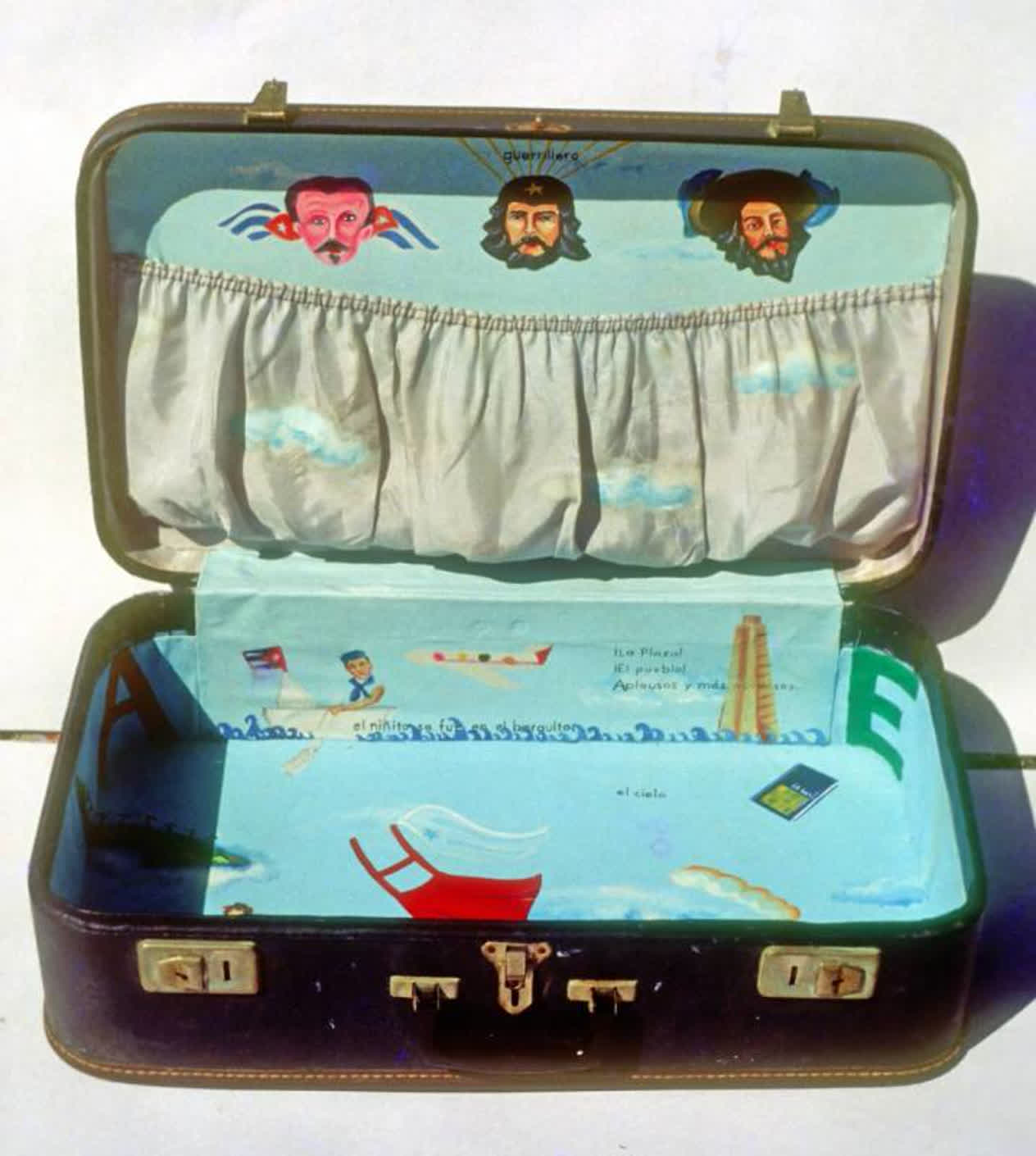Viktor El-Saieh Fet Chaloska (Chaloska Festival) 2005–16

© Viktor El-Saieh

Viktor El-Saieh creates vibrant paintings that are dense with imagery relating to the rich culture of his native country of Haiti. El-Saieh is interested in how Haiti’s turbulent history has spilled into its religious customs and folkloric traditions. Fet Chaloska (Chaloska Festival) arose from El-Saieh’s extensive exploration of the sinister Haitian carnival figure “Chaloska”—a character in military garb with a protruding mouth and claw-like teeth, who appears at the bottom center of this painting. The figure is based on a military officer, General Charles Oscar Etienne, who terrorized the southern town of Jacmel in the early 1900s and was involved in the murder of 150 political prisoners. Depicting a surreal scene of a carnival celebration populated by religious, mythical, and folkloric figures, El-Saieh addresses the way in which political realities, both past and present, are transposed into contemporary Haitian vernacular traditions.
Identification
Title
Fet Chaloska (Chaloska Festival)
Production Date
2005–16
Object Number
2020.082
Credit Line
Collection Pérez Art Museum Miami, museum purchase with funds provided by PAMM’s Collectors Council with additional contributions provided by Karen Bechtel, Evelio and Lorena Gomez, Jorge M. Pérez, and Craig Robins
Copyright
© Viktor El-Saieh
https://www.pamm.org/en/artwork/2020.082
Copy artwork link
Physical Qualities
Medium
Acrylic on canvas
Dimensions
71 1/4 x 95 1/4 x 1 1/2 inches
Visual Description
Fet Chaloska, by Haitian artist Viktor El-Saieh, is an acrylic painting on canvas. It measures approximately seventy-two by ninety-six inches, or six feet by eight feet, in a landscape orientation.
This painting captures a lively and colorful carnival in a forest setting, containing various scenes across the canvas. The painting can be organized into roughly three bands, that grow progressively more animated when viewed from the top and moving downward. The top is mostly the green leaves of the trees that make up the forest setting. The middle band is mostly the tree trunks, and therefore background scenes of the carnival. The bottom band contains the foreground and main staging area of the carnival.
Starting from the top of the canvas, the top third of the painting is composed of rounded shapes in varying shades of green, indicating the canopy of a forest or jungle. On the right side of the canvas, are the first of many ghost-like figures. There is a black figure with a white face seen in profile, peeking out of the tree leaves. They are shining a flashlight on a grey face, floating among the treetops toward the centerline of the canvas.
Moving down, the middle band of the canvas is composed of the vertical trunks of the forest’s trees. In between the repeating brown columns are the first of the carnival’s many scenes. Starting on the left-hand side are various figures, three of them are black silhouettes with horns protruding from their heads. They are surrounded by orange and yellow paint, as if caught in a sectioned-off forest fire. Some of the other participants standing in their vicinity have animal heads, some of them with long snouts and bared teeth. Others have horns or whiskers. Moving toward the right along the band of tree trunks, left of the center is another ghostly image, painted in white, floating among the brown branches. The white figure has wing like protrusions coming out it’s sides and a faint face. To the left of the floating ghost, is a smiling stilt walker, standing tall and facing the viewer with his arms stretched to the sky. The stilt walker is wearing a purple stovepipe top hat that grazes the bottom of the green tree canopy, as well as yellow trousers and a purple blazer. Further to the right of the stilt walker, on the rightmost third of the canvas, are the outlines of figures seen behind the trees. They mirror the figures on the left, as they are painted in nearly all black, and with the imagery of fire behind them, however, they are located deeper within the forest. Starting at the center of the painting, the last band fans out to the lower left and right corners of the canvas, giving the bottom third of the painting a triangular composition. This foreground at the bottom of Fet Chaloska is where the Carnival fully unfolds out toward the viewer in several different scenes. There are dozens of participants in a rainbow of colors and poses, many of them in a variety of animal costumes. Some have horns protruding from their heads, or have dog-like or cat-like masks or head coverings. At the center of the carnival, is a flood of people marching toward the viewer, like a crowded parade. These people are painted entirely in red with a thin yellow outline. They all have sunglasses and bare their teeth from outwardly puckered lips. These figures are the Chaloska, as named in the title. They are meant to be representations of a Haitian military figure from the early twentieth century. They form a triangular mass that starts as a narrow stretch of figures at the center point of the painting, that widens toward the bottom of the canvas. The figures also increase in size from the back of the parade to the front, which is located at the bottom of the painting, in order to give the illusion of depth. The Chaloska parade in a green ditch that resembles a swamp, forming a clearing between the trees and the ground. On all sides of the marching Chaloska, are other figures in assorted poses and activities, some with animal head costumes, or other face coverings. There is one man in a blue robe at the very bottom of the painting with a long white beard, tall top hat, and cane. From his mind, a green thought bubble wraps around him, and inside, is the image of a military uniform-clad man with orange and pink beams shooting out of his eyes.






